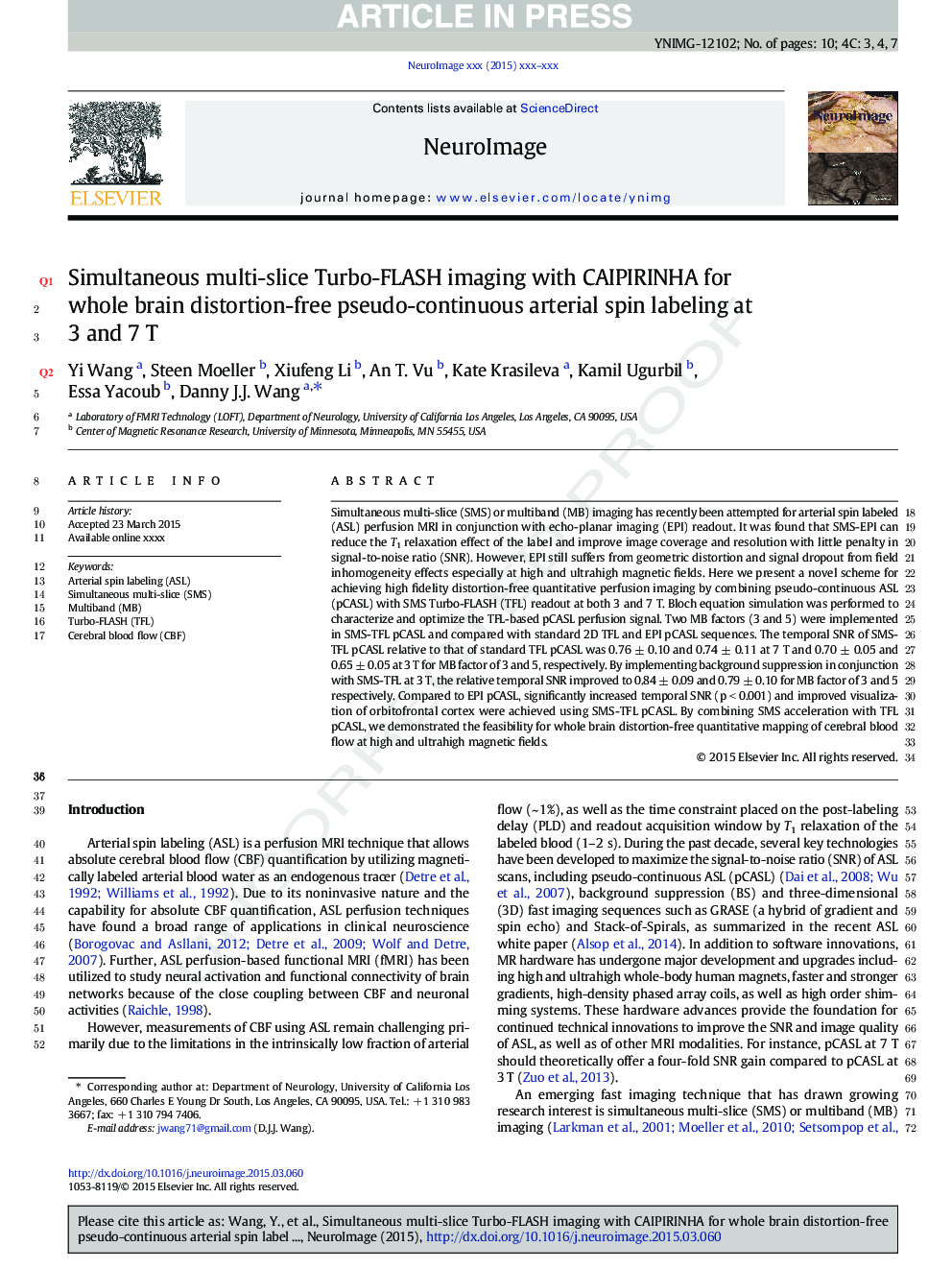| Article ID | Journal | Published Year | Pages | File Type |
|---|---|---|---|---|
| 6025261 | NeuroImage | 2015 | 10 Pages |
Abstract
Simultaneous multi-slice (SMS) or multiband (MB) imaging has recently been attempted for arterial spin labeled (ASL) perfusion MRI in conjunction with echo-planar imaging (EPI) readout. It was found that SMS-EPI can reduce the T1 relaxation effect of the label and improve image coverage and resolution with little penalty in signal-to-noise ratio (SNR). However, EPI still suffers from geometric distortion and signal dropout from field inhomogeneity effects especially at high and ultrahigh magnetic fields. Here we present a novel scheme for achieving high fidelity distortion-free quantitative perfusion imaging by combining pseudo-continuous ASL (pCASL) with SMS Turbo-FLASH (TFL) readout at both 3 and 7 T. Bloch equation simulation was performed to characterize and optimize the TFL-based pCASL perfusion signal. Two MB factors (3 and 5) were implemented in SMS-TFL pCASL and compared with standard 2D TFL and EPI pCASL sequences. The temporal SNR of SMS-TFL pCASL relative to that of standard TFL pCASL was 0.76 ± 0.10 and 0.74 ± 0.11 at 7 T and 0.70 ± 0.05 and 0.65 ± 0.05 at 3 T for MB factor of 3 and 5, respectively. By implementing background suppression in conjunction with SMS-TFL at 3 T, the relative temporal SNR improved to 0.84 ± 0.09 and 0.79 ± 0.10 for MB factor of 3 and 5, respectively. Compared to EPI pCASL, significantly increased temporal SNR (p < 0.001) and improved visualization of orbitofrontal cortex were achieved using SMS-TFL pCASL. By combining SMS acceleration with TFL pCASL, we demonstrated the feasibility for whole brain distortion-free quantitative mapping of cerebral blood flow at high and ultrahigh magnetic fields.
Related Topics
Life Sciences
Neuroscience
Cognitive Neuroscience
Authors
Yi Wang, Steen Moeller, Xiufeng Li, An T. Vu, Kate Krasileva, Kamil Ugurbil, Essa Yacoub, Danny J.J. Wang,
